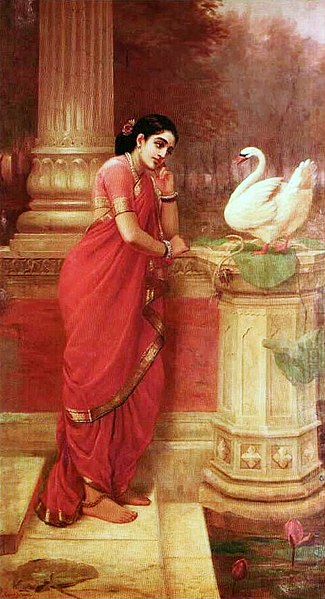In today’s digital world, it requires just a click to capture precious moments. With a single snap of the camera, your likeness can be stored forever. You can change poses every 5 seconds and click numerous photographs in just a few minutes. Ranging from professional cameras to the compact ones you can choose any model to store the memories of people. But what about the time before the camera?

The time when capturing memories took hours of sweat, the time where no digital gadget could help to capture the Queen’s beauty and print it as a two-dimensional image. And the time where King’s wealth and pride could not be stored by just a snap. This is the time of the fascinating art of portraits, about which we are going to read now.
The Beginning of Fame
Portraiture is the art of photography without a camera but with a brush. Portrait painting implies landing the features of a person on the canvas. During the Ancient period, the culture and prosperity of India were captured in the colours of portraits only. It is believed that the murals of Ajanta cave are an example of portrait paintings where Gods and humans coexist.
The earliest recorded portrait of a King is the Painting of Raja Raja Chola standing behind his guru Kuruvoorar that dates back to the end of 10th century. It was the Mughal empire who recognised portrait making as a luxurious facility. Portraiture enjoyed exceptional patronage during the reign of Mughals. The word was spread all across India and the portrait artists were called in the Rajput’s palaces as well.
Portrait as a Luxury
The portrait was not just a painting, it was a piece of art portraying the virtues, wealth and achievements of a person. It was the art of painting an alike figure that resembles the attributes of the person. But it was not an easy task to get a portrait made. No doubt the real sweat was shredded by the artists, but the model also worked hard to remain still. Handmade portrait meant long hours of observation and imitation.
Portraiture was the art that convinced a powerful emperor to sit still for long hours. Portraiture was the art that captured the angelic charisma of the queens. Portrait making demanded the devotion of both the sides in return it paid well to both of them. The royal family who enjoyed the expensive portrait making would be startled by the grand picture of themselves and the painters who earned this opportunity would be astonished by the reward they receive.
Along with the personalities, flankers (artists) used to capture the glorious occasions and proceedings. There are many portraits dating back to the ancient era which displays the court proceedings and informs us about the royal rituals.
The Influence of European Concepts on Portraiture
It was after the entry of Britishers in India that made portraiture the art of everyone. The concepts of naturalism and realism influenced the art schools and added a new and alluring flavour to portraiture in India. The 19th century marked the rise and shine of portraits. India was blessed with applaudable painters who were successful in preserving the essence of portraiture.

Raja Ravi Varma is known as one of the greatest painters of India and he devoted most of his time in creating wonderous portraits. He believed in painting the real and candid beauty of women. He gracefully blended the European concept of realism with the rich Indian traditions. Hamsa Damyanti is one of his most famous artworks that display the unfiltered attributes of a woman standing beside a swan. Besides him, there were numerous artists who beautifully created the portrait of Indian men and women.
Portraits of Indian Weddings and villages
Furthermore, the painters loved to store the memories of prosperous occasions such as weddings in the form of portraits. Today for Indian wedding photography a photoshoot is arranged and a whole album with different photos in different poses are created. But back then only for a single picture the bride and groom had to sit still in a single pose for hours. The painters also explored the innocence of Indian villages. There are numerous paintings displaying the chastity and honesty of the villages.
With the introduction of the camera in India, the tradition of portraiture started to fade. But it was the glory and charisma of portraits that saved the art from extinction. In today’s camera-dominated world also, the admirers of art follow and appreciate portraits. Though it demands for longer hours, the chastity of a portrait can never be found in a camera produced image. The hard work of a painter and the patience of a model adds value to the vibrant colours of a portrait. Portrait spurred as a luxury, continued as a common man art, coexisted with a camera, still earns appreciation, and will always be an angelic art admired by all.
